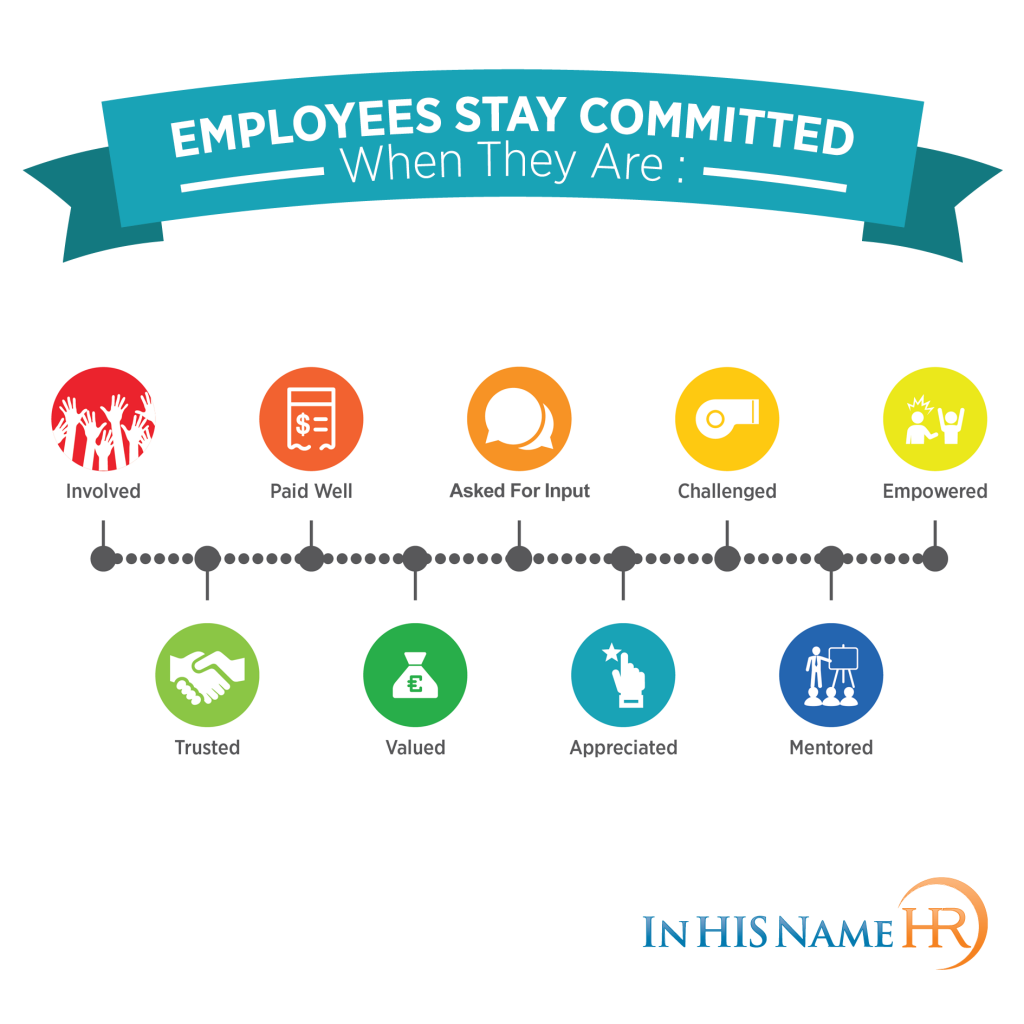Are Your Employees Involved? Employee Commitment Series

This blog series focuses on nine areas that keep employees committed to your organization. In our opinion, employees stay committed when they are Involved, Paid Well, Asked for Input, Challenged, Empowered, Trusted, Valued, Appreciated, and Mentored.
Are Your Employees Involved?
In an article in Fortune magazine, Dan Schawbel stated that the primary priority for business leaders would be “retaining employees in a competitive talent marketplace.” He added, “In a new study by Future Workplace and Kronos, we found that 87% of employers said that improving retention is a critical priority for their organization.” Mr. Schawbel’s suggestion to focus on retention is spot on.
Let’s start with the first area, Involved. Oftentimes, when we first engage with an organization, leadership asks us to implement programs to immediately improve employee relations. We hear, “Employees are leaving in droves,” that turnover is high. Or “Our pay is too low. We repeatedly lose people to organizations that pay slightly more.” Excuses and explanations abound. But when we ask the key question How do you know the true reasons people are unhappy or why they are leaving?, the explanations are generally theoretical or hypothetical, not fact-based.
Our first suggestion to any organization: Don’t make changes or implement programs without first determining what the core issues are. Doing so is a waste of money and time, and can also hurt your organization’s culture and morale. That is where being involved comes into play. Use a skilled facilitator to run employee focus groups. Include representatives from each department. Have those same representatives talk to their departmental colleagues about what might be important to address.
One area many organizations bypass is the exit interview. An exit interview is a valuable tool to collate critical data and ascertain employees’ true reasons for leaving. Ask simply whether they felt involved in their departments, and with the rest of the organizational team. Ask them to suggest how your organization could do better in this area.
Finally, one of the best ways to uncover potentially problematic issues in your organization is to conduct confidential 360-degree feedback assessments of your leadership staff. Used the right way, it reveals key trends in certain areas of employee relations. As a plus, your findings can also serve as a tool for organizational-wide leadership development.
Most important: When employees are given access to their leadership, they walk away not only feeling heard but also involved in the organization.
####
Mark A. Griffin is founder and Chief Consultant at In His Name HR LLC. He has over 20 years of HR experience. In His Name HR helps organizations build high-performance Human Resource programs. Visit them at In HIS Name HR or Send Email

Receive Blog Updates
|
|
Thank you for Signing Up |




